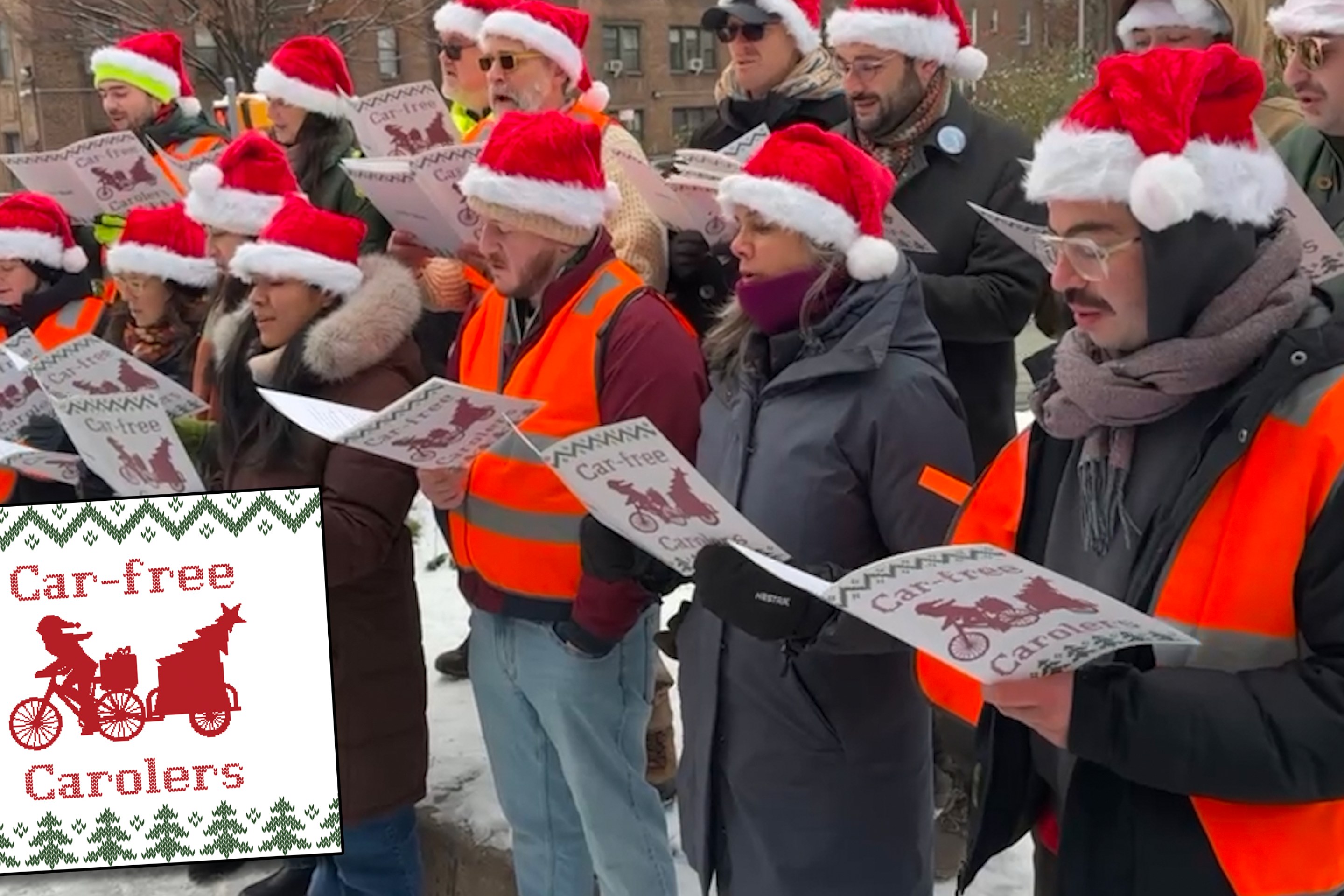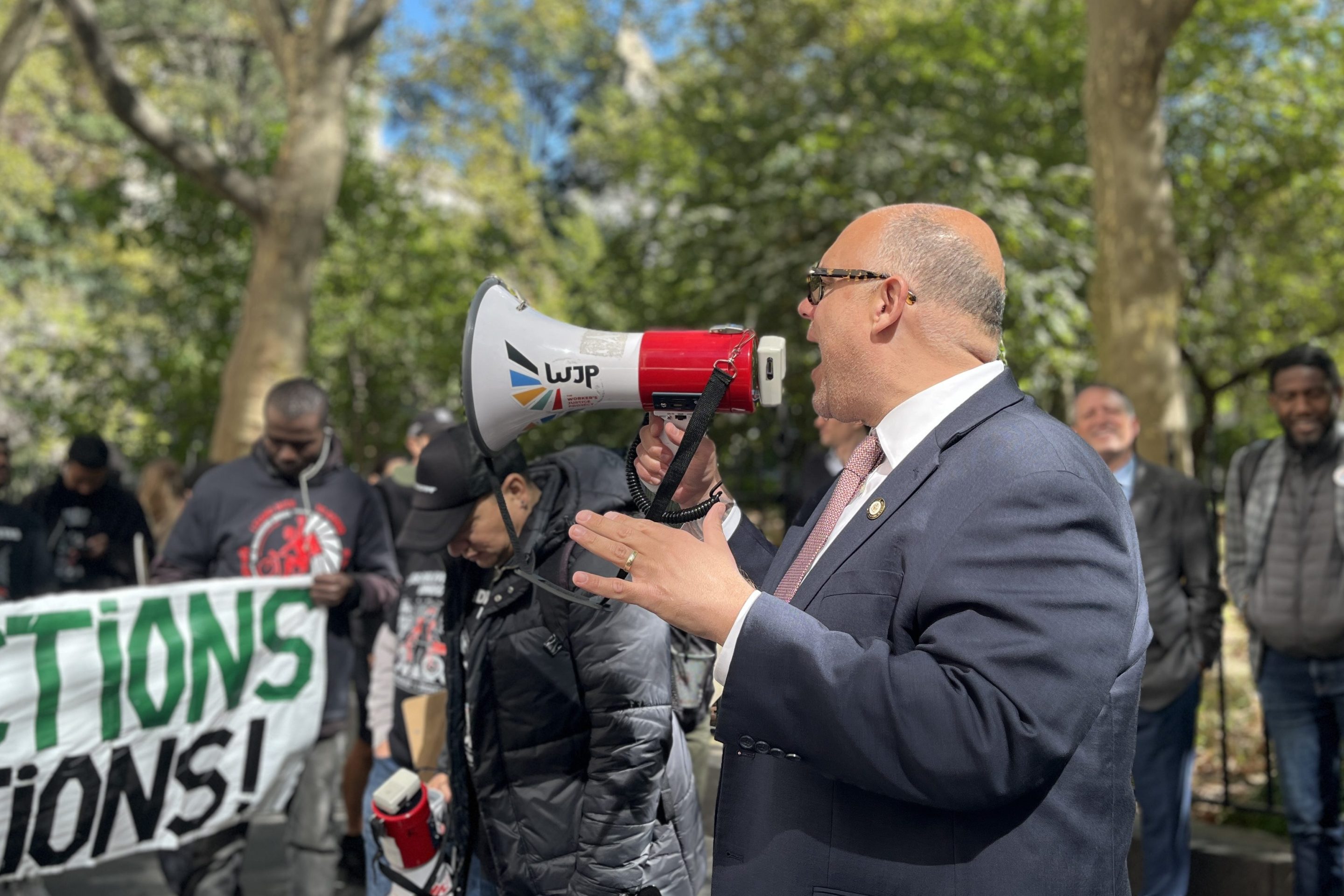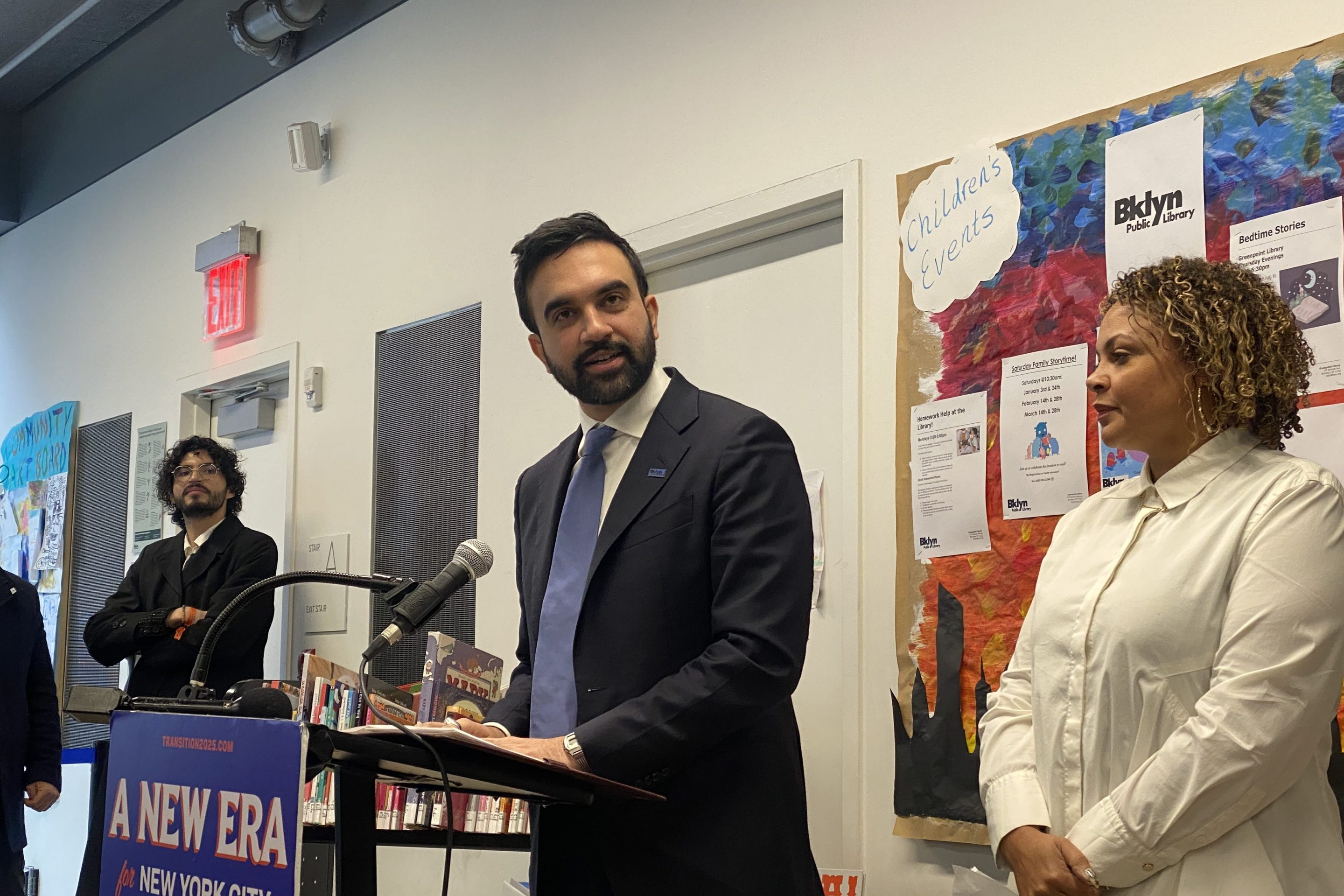Red light, green light ... yellow light.
An overwhelming majority of City Council members demanded on Thursday that state lawmakers pass reauthorizing New York City's small red-light enforcement camera program and expand it to 600 intersections — but the Council's "home rule" resolution stopped far short of the bill sponsors' original desire to expand the 150-camera program to 1,325 crossings.
The 600 cameras would represent a four-fold expansion. The original Albany bill (S2812/A5259) wanted to get 10 percent of city intersections enforced by cameras, up from just 1 percent today. But that bill was amended to 600, thanks to both internal debate in Albany and negotiations with the Council.
And that's where the finger pointing begins.
A source in the legislature told Streetsblog that some members of the Council balked at 1,325 intersections, saying they could only stomach 500-600. But a Council member told Streetsblog that there were members of the state legislature who couldn't abide the idea of even more than 300 cameras, so street safety advocates are lucky that the Council negotiated that up to 600.
And, indeed, 600 is better than none — which would have been the result had a new authorization bill not been passed, because the city's red light camera program would sunset at the end of this year without a new law. It's now expected to pass before the end of the state legislative session on Friday.
"This will expand it to about 4 percent of intersections, and it will make our city safer," said Council Member Lincoln Restler, who led the home rule process, which succeeded on Wednesday with a 40-11 vote, six votes above the required 2/3s majority. "The data on the efficacy of red light cameras couldn't be more clear. And considering that we had 29 people killed last year as a result of drivers running red lights, we desperately need more cameras in place to improve driver behavior and make our community safer."
Restler added that 600 was the most cameras the city could hope for "based on the kind of internal negotiations and conversations we've had with counterparts in Albany."
He denied an assertion by an Albany source that Council members, including Transportation Committee Chair Selvena Brooks-Powers, refused to go beyond 600. Restler said the number was already lower by the time the state Senate and Assembly finished its own sausage-making.
And, given the expansion, one of the bill's sponsors was pleased to see it go forward.
"It's still a four-fold improvement, so I would call it a victory," said Assembly Member Jeff Dinowitz. "But that doesn't really stop us from trying to do it better."
To that end, Dinowitz said he pushed to tweak the final bill so that it reauthorizes the program through only 2027, instead of 2030 under the original bill. That way, the legislature can come back sooner to expand it, he claimed.
"I said, 'If I'm cutting down the number of intersections by half, I want to make the renewal happen sooner so we have a second shot at increasing the number more quickly in the future."
Of course, reauthorization in just three years will require activists to return to Albany to make sure the program doesn't entirely slip away and to fight to expand it.
When that happens, Dinowitz promised to have their backs.
"I want people to be safer throughout the city, and giving every intersection a camera, I guarantee you, would make that intersection safer."
Dinowitz has data to back that up. Last year, the existing 150 red-light cameras cranked out more than 704,280 tickets, or roughly 1,930 per day. But don't be deceived by those numbers; according to DOT, the average number of red-light violations issued at camera locations has declined by more 77 percent since the program began in 1994.
Advocates were on board to consume the half-loaf they've been given.
"Eventually we want every intersection to be protected by a camera but until then, we’re glad to see the largest expansion of this program since it began in 1994," said Sara Lind, co-executive director of Open Plans. "There hasn’t been a single death at a camera-protected intersection since then so it’s a big deal to expand the program at all. And with the reauthorization period shortened to just 2027, we have another opportunity in just three years to prove that these cameras have been effective and should be at even more intersections. It's momentum worth celebrating."
That said even some of the Home Rule message's supporters remain dubious about red-light camera enforcement.
"There is more work to be done ... to make sure that we're not merely just setting cameras up, but improving communities and the safety of our streets," Brooks-Powers told her colleagues after seeking permission to "explain" her yes vote.
The transportation chair has long had a complex relationship with enforcement cameras, consistently signaling that she believes the cameras unfairly target low-income communities. But they also target drivers in her family, as well; a family car that Brooks-Powers has said in the past is driven by her husband has been nabbed 14 times by city speed cameras, and once by a red light camera, since May 2023, according to city records.
It has racked up 48 camera tickets for speeding and two for red light running since May 2020.
Brooks-Powers did not respond to a request for comment.
But the Department of Transportation was pleased by the Council action:
“The home-rule vote represents a critical step in the process to renew and expand the city’s red light camera program," said agency spokesman Vin Barone. "We appreciate the City Council’s support of this life-saving tool.”






